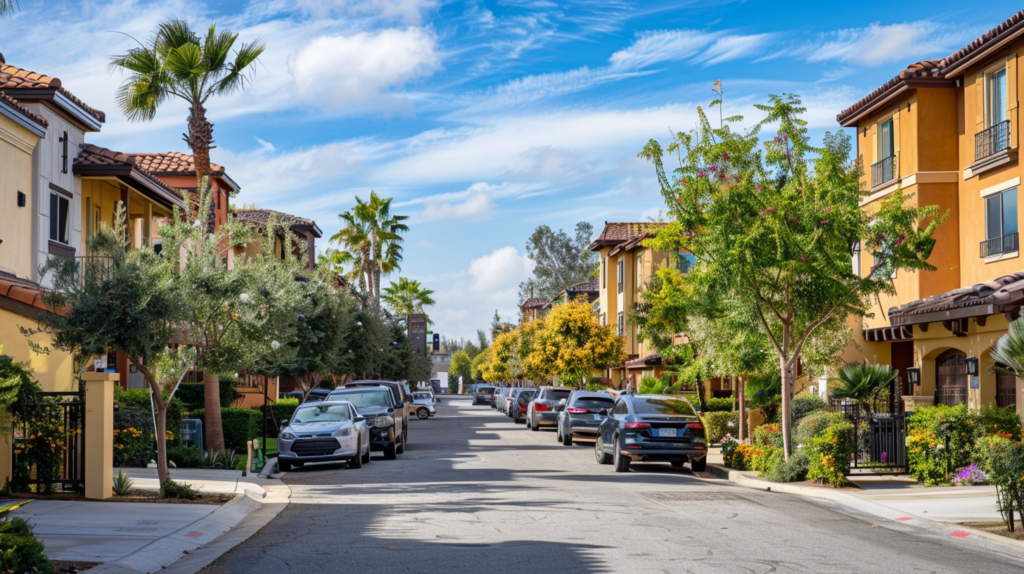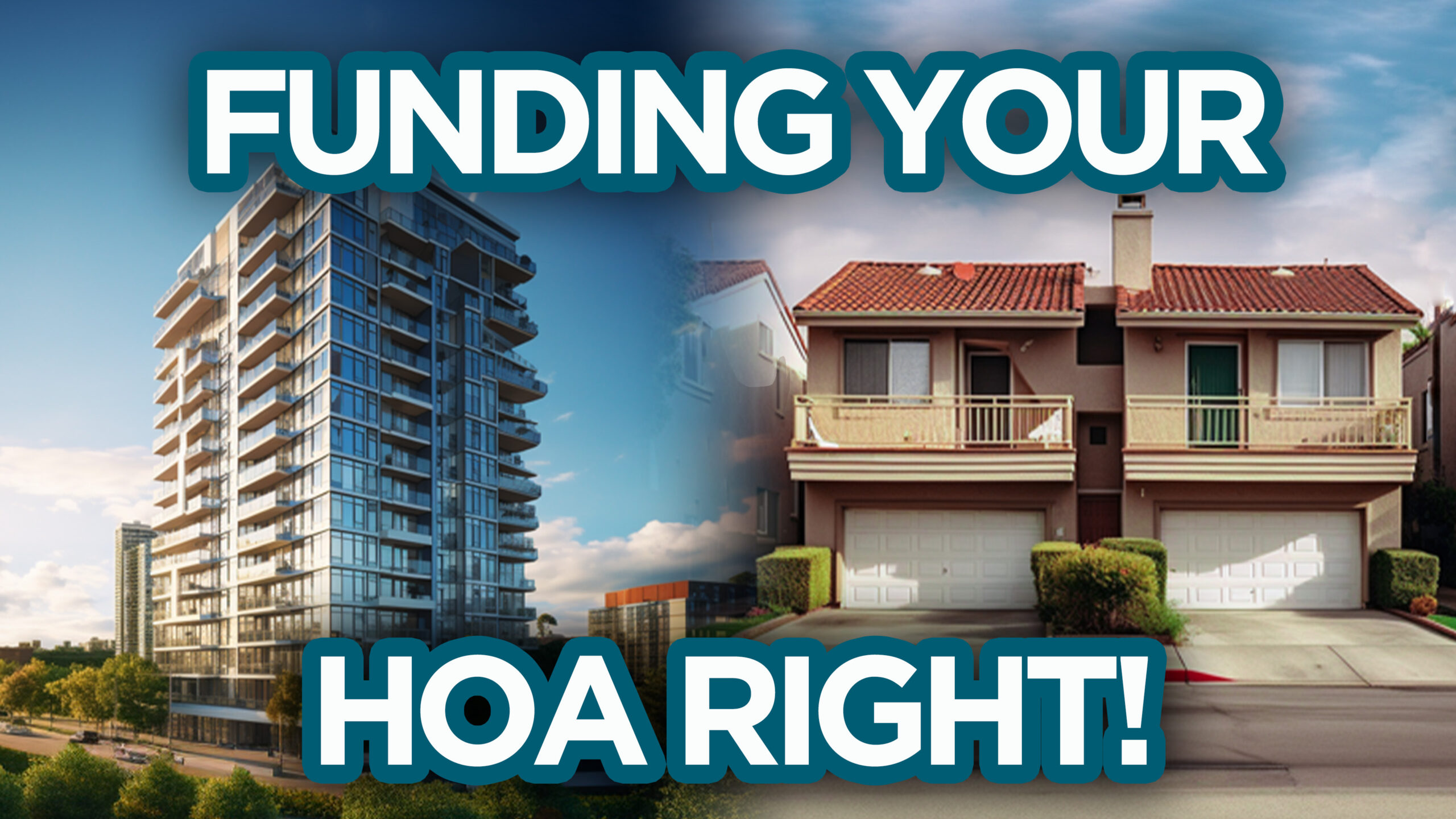Every board member has a critical responsibility to manage and support the HOA Reserve Fund. Even when it seems impossible, discouraging, or outright unnecessary, its very purpose and best practices proves all of that wrong. Let’s peel back the curtain and see how HOA reserve funding is achieved with careful strategy and tools that work. We’ll cover real-life examples of two community associations – a townhome and a condo – so you can see how complete HOA reserve funding is done from start to finish, right from the experts!
What is Your HOA Reserve Fund
At its core, an HOA reserve fund is like a holding pot for the community, used for collect funds to offset ongoing deterioration to important common area components, from roofs to roads. A well-funded reserve fund minimizes the need for special assessments, stabilizes dues over time, and enables your community to handle expected easily.
How to Fund a HOA Townhome
Let’s take a real 34-unit HOA townhome association, with 40+ years of history. The key to their approach is starting with a component list detailing each element’s useful life, remaining useful life, and current replacement costs. By setting up the plan, like executing asphalt repair and phasing out building painting, they effectively manage HOA reserves and minimize homeowner inconvenience.
On the board for a HOA townhome? Keep this in mind:

Reserve Studies are Necessary: A professional reserve study establishes the foundation for the best HOA funding plan by identifying and pricing out anticipated repairs for every reserve component, preparing you to have sufficient funds when needed.
Look at Project Significance: The significance table within your HOA townhome reserve study helps you see which projects have the greatest impact on your HOA reserve funding requirements. Focus first on common large projects (like siding, roofing, and asphalt surfaces).
Start Early, Be Proactive: Addressing reserve needs early avoids larger issues and financial burdens down the line for you and the other homeowners.
The Current Economy: Earned interest and inflation changes heavily impact reserve funding needs. Regularly review and adjust your condo HOA’s funding plan according to the current state of the economy.
How to Fund a HOA Condominium
Let’s look at the more complex 134-unit HOA condominium, featuring a rooftop pool, multiple elevators, etc. Their longer list of components requires even more careful planning and prioritization. Watch exactly how this association navigates unexpected expenses in the video above!
Here’s a few things you can take away from their HOA reserve fund management:
Reserve Fund Priorities: Identify and prioritize the crucial components (e.g., roof, elevators, pool) your HOA is responsible for maintaining. Not everything needs reserve funding (some small projects are done from the Operating Fund), so review your HOA condominium reserve study and consult your reserve study specialist to evaluate what should be prioritized.
Funding Flexibility: Don’t feel restricted to a 30-year timeframe. Phased out projects and adjustments can make the plan more manageable for HOA condo homeowners.
Inspections Matter: Include essential inspections in your reserve plan, even if they’re not directly listed as maintenance responsibilities in your governing documents. Remember that you hold a duty of care to the common areas and the health of every structure, and professional inspections give you great insights into how your facility is aging.
Test HOA Budgets: Utilize tools like uPlanIt to model different funding scenarios and assess their impact on your HOA condo. Test your budget risk-free!
Long-Term Sustainability: Aim for at least a70% funding level to minimize the risk of special assessments and ensure your HOA’s long-term financial stability. Don’t be tempted to simply meet the baseline funding requirement (just keeping your Reserves above zero) on your condominium reserve study. A strong HOA reserve fund protects your community from heavy financial hardship.

Key HOA Reserve Fund Tools
Professional Reserve Studies
Regularly updated reserve studies are foundational, offering a roadmap for future expenses and guiding your HOA reserve fund strategy. National Best Practice is for a site-inspection-based update at least every third year, with low cost no-site-visit updates in the in-between years. Click on the button below to start your townhome or condominium reserve study!
Flexible Funding Plans
Tailor your approach to fit your community’s unique needs, like coordinating projects, phasing out when needed, and allowances for ongoing maintenance.
Prioritization of Projects
Focus on what matters most. Significant projects should be accomplished in a timely basis, not deferred.
Inflation & Interest Adjustment
Stay realistic about economic factors. Adjust your funding plan to account for inflation and seek out accounts that allow your HOA reserve fund to grow.
Homeowner Support
Share the process behind your reserve funding decisions with the rest of the community. Educated homeowners are more likely to support necessary dues increases or special assessments because they understand the reason behind it. The costs are driven by Mother Nature and Father Time, not you!
Managing an HOA reserve fund requires foresight, flexibility, and a commitment to the community’s long-term well-being. By creating strategic reserve funding practices for your HOA, prioritizing critical projects, and preparing for the reality of expected deterioration, your homeowners will find peace knowing that their home values are being protected. Remember, investing in your HOA reserve fund is investing in the well-being and sustainability of your community.

